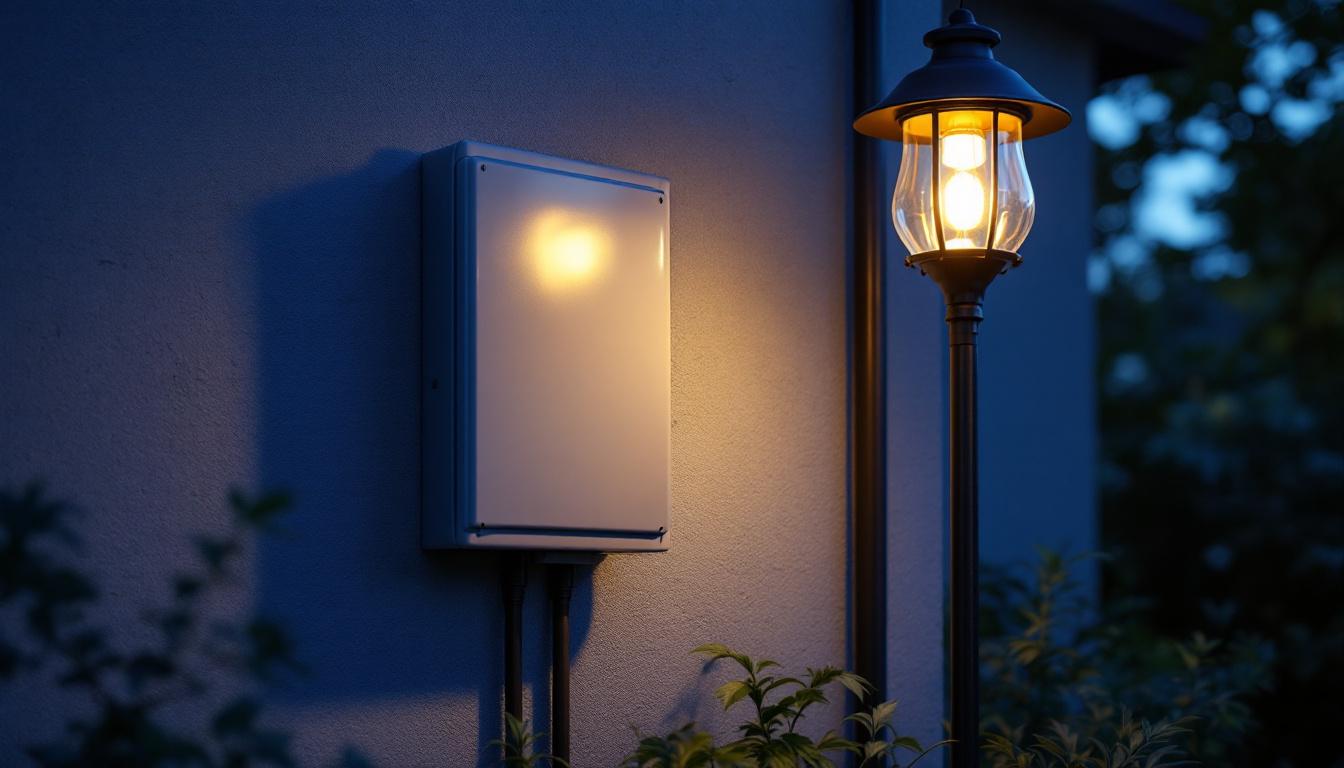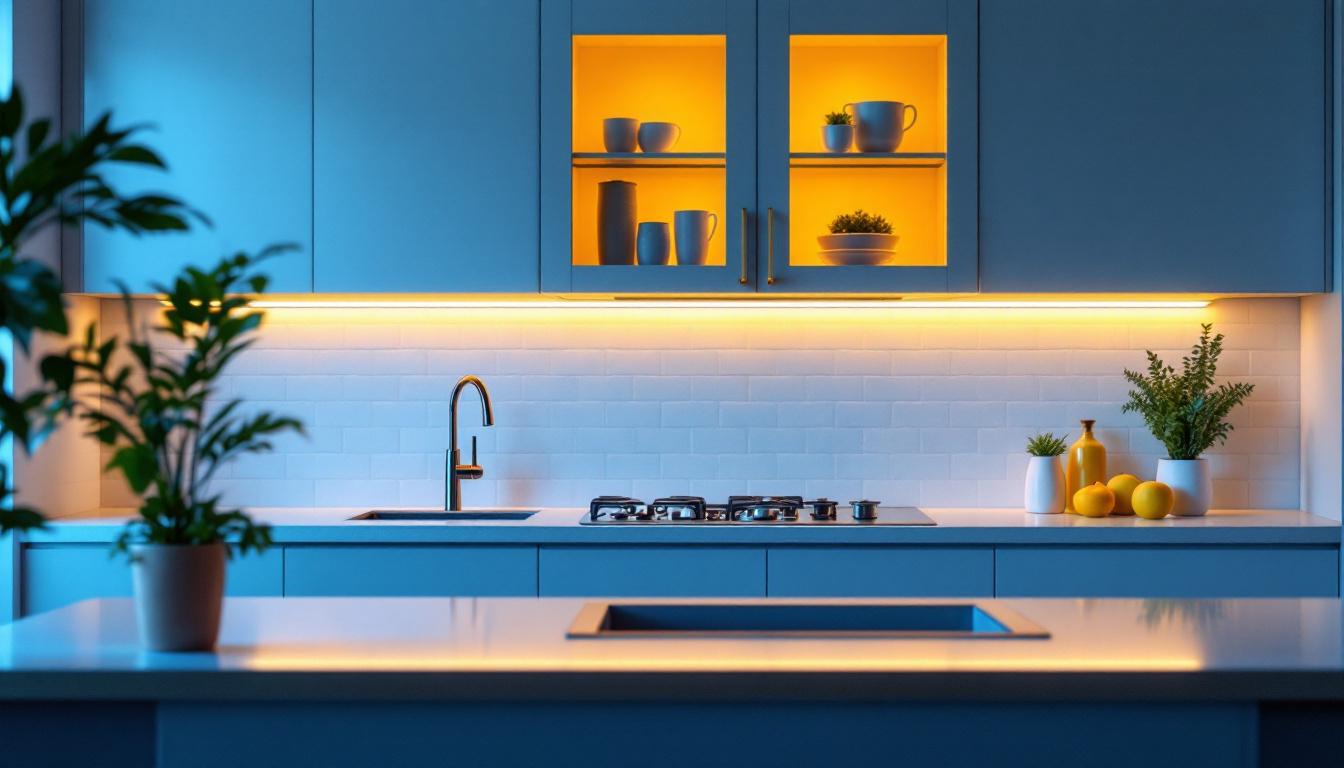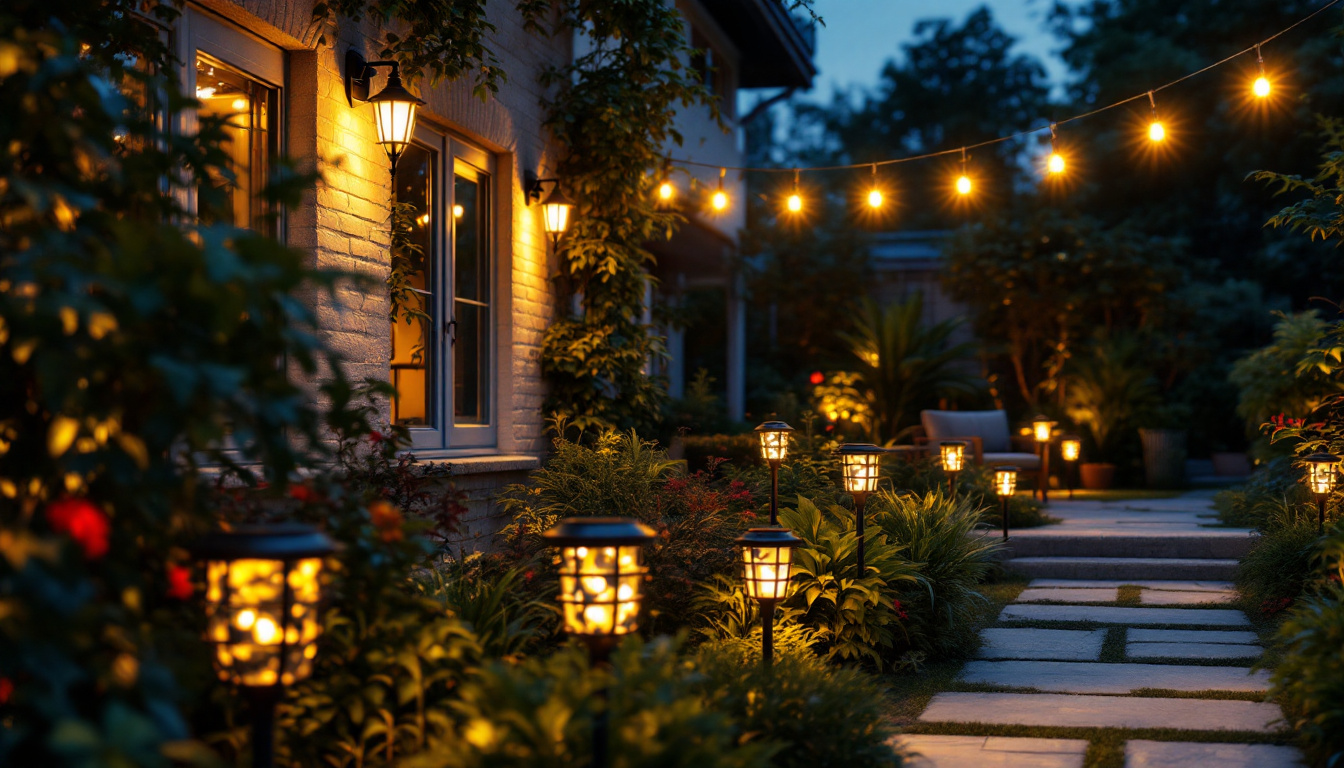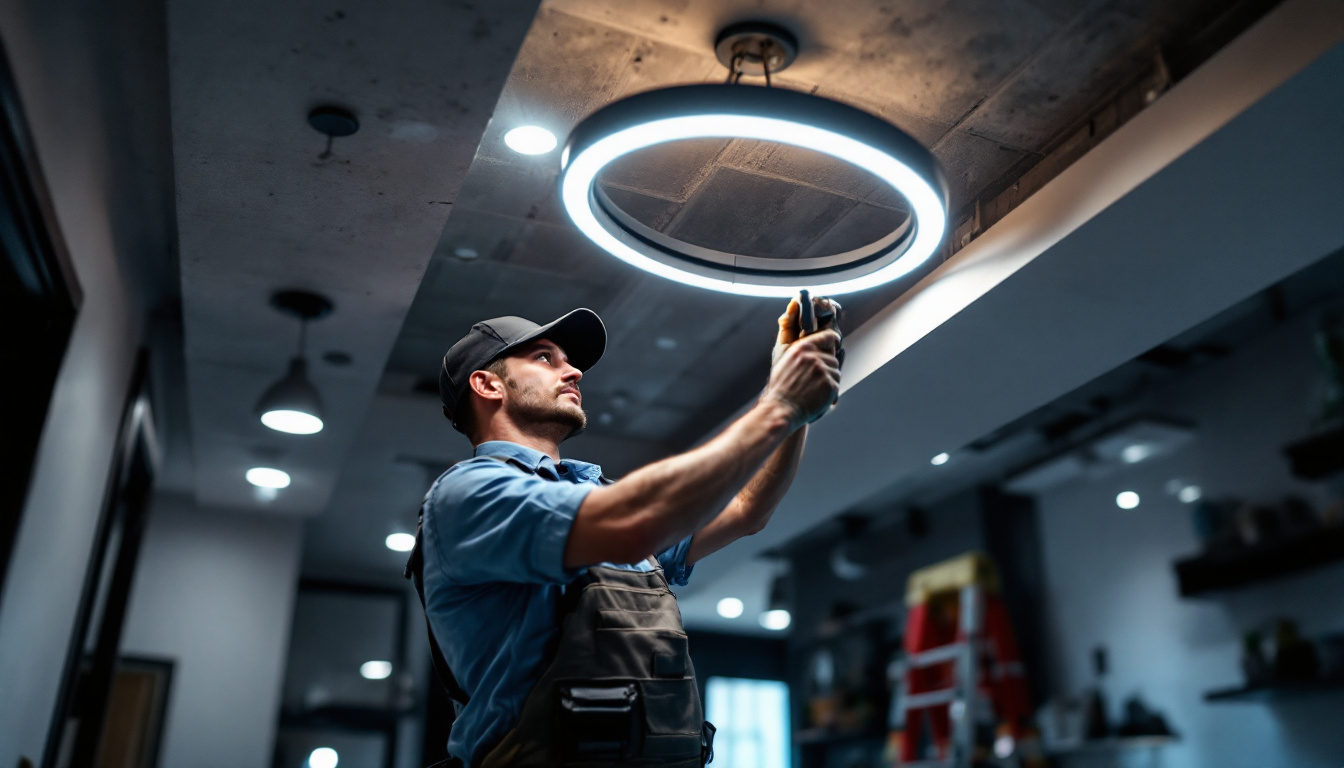
In the realm of outdoor lighting, the electrical box serves as a crucial component that ensures safety, functionality, and aesthetic appeal. For lighting contractors, understanding how to effectively utilize electrical boxes for outside lights can lead to enhanced lighting solutions that meet client expectations and regulatory standards. This article delves into the various aspects of electrical boxes for outdoor lighting, offering insights into their importance, installation practices, and innovative applications.
Electrical boxes are essential for housing electrical connections and protecting them from environmental factors. In outdoor settings, these boxes must withstand moisture, temperature fluctuations, and physical impacts. They not only provide a safe enclosure for wiring but also serve as a mounting point for light fixtures. The durability of these boxes is crucial, as they often face harsh conditions, including rain, snow, and UV exposure, which can degrade lesser materials over time. Choosing the right electrical box can significantly extend the lifespan of an outdoor lighting system.
When selecting an electrical box for outdoor lighting, contractors have several options to consider. Common types include weatherproof boxes, junction boxes, and surface-mounted boxes. Each type is designed to meet specific needs based on the installation environment. Weatherproof boxes are particularly important for outdoor applications, as they are sealed to prevent water ingress. Junction boxes allow for the connection of multiple wires and can be used to distribute power to various fixtures. Surface-mounted boxes are ideal for installations where it is impractical to run wiring through walls, providing a straightforward solution for outdoor lighting.
In addition to these common types, there are also specialized electrical boxes designed for specific applications. For instance, some boxes come equipped with built-in GFCI (Ground Fault Circuit Interrupter) protection, which is crucial for preventing electrical shocks in wet environments. Furthermore, there are boxes designed for specific fixtures, such as those that accommodate ceiling fans or heavy-duty outdoor lights, ensuring that the installation is not only safe but also meets the aesthetic and functional needs of the space. Understanding these options allows contractors to make informed decisions that enhance both safety and performance.
Proper installation of electrical boxes is critical for ensuring safety and functionality. This includes adhering to local electrical codes and guidelines, which dictate the types of boxes that can be used in outdoor settings. Additionally, ensuring that the box is securely mounted and sealed against moisture is vital for preventing electrical hazards. The installation process should also take into account the potential for expansion and contraction due to temperature changes, which can affect the integrity of the seals and connections over time.
Contractors should also consider the accessibility of the electrical box for future maintenance or upgrades. An accessible location can save time and effort when servicing outdoor lighting systems, ultimately benefiting both the contractor and the client. Moreover, planning for future technology advancements, such as smart lighting systems, can influence the choice of electrical boxes. With the rise of smart outdoor lighting, having a box that can accommodate additional wiring or connectivity options may be advantageous. This foresight not only enhances the functionality of the installation but also ensures that it remains relevant as technology evolves.
Installing an electrical box for outdoor lights involves several best practices that can enhance safety and performance. Following these guidelines can help ensure that installations are both compliant and effective.
The location of the electrical box is paramount. It should be positioned away from direct exposure to the elements, such as heavy rain or snow. Ideally, the box should be mounted under eaves or overhangs to provide additional protection. Furthermore, considering the proximity to power sources and light fixtures can streamline the installation process.
Contractors should also be mindful of the height at which the box is mounted. It should be easily accessible for maintenance while remaining unobtrusive in the landscape design. This balance between functionality and aesthetics is crucial for client satisfaction. Additionally, it’s wise to consider the surrounding environment; for instance, areas with heavy foliage may require more robust protection against falling branches or debris. Proper planning can mitigate potential hazards and enhance the overall durability of the installation.
To ensure longevity and safety, sealing and weatherproofing are essential steps in the installation process. Using appropriate gaskets and sealants can prevent moisture from entering the box, which is a common cause of electrical failures in outdoor settings.
Contractors should also inspect the integrity of the box and its fittings regularly. Over time, exposure to the elements can degrade seals, necessitating timely replacements to maintain protection against water and debris. Furthermore, employing corrosion-resistant materials for screws and fittings can significantly extend the lifespan of the installation. It’s also advisable to use outdoor-rated electrical components that can withstand temperature fluctuations and UV exposure, ensuring that the entire system remains functional and safe throughout the seasons.
Electrical boxes can be leveraged for more than just traditional lighting setups. With advancements in technology, lighting contractors can explore innovative solutions that enhance outdoor spaces while maximizing the functionality of electrical boxes.
Integrating smart lighting systems into outdoor environments is becoming increasingly popular. Electrical boxes can serve as hubs for smart lighting controls, allowing contractors to install dimmers, timers, and sensors that enhance the user experience.
By utilizing smart technology, contractors can offer clients customizable lighting solutions that adapt to their needs. For instance, motion sensors can automatically activate lights when someone approaches, providing both security and convenience. Furthermore, these smart systems can be programmed to adjust the brightness based on the time of day or ambient light levels, creating a dynamic atmosphere that changes with the environment. Homeowners can also control their outdoor lighting remotely via smartphone apps, allowing for greater flexibility and control over their outdoor spaces.
Electrical boxes can also be designed to accommodate multiple functions beyond lighting. For example, they can house outlets for outdoor equipment, such as power tools or decorative features like water fountains. This versatility can be a selling point for contractors looking to provide comprehensive solutions.
Additionally, incorporating USB charging ports into outdoor electrical boxes can cater to the increasing demand for charging devices in outdoor settings, enhancing the overall functionality of the space. This feature is particularly appealing for gatherings, where guests may want to charge their devices while enjoying the outdoors. Moreover, electrical boxes can be equipped with weather-resistant covers to ensure durability and safety, making them suitable for various outdoor environments. By integrating these multi-functional capabilities, contractors can create a seamless blend of utility and aesthetics, transforming outdoor areas into fully equipped living spaces that meet the diverse needs of their clients.
Ensuring compliance with local electrical codes and safety standards is a fundamental aspect of any outdoor lighting installation. Electrical boxes must be installed in accordance with regulations to prevent hazards and protect the integrity of the electrical system.
Each region has specific codes that dictate the types of electrical boxes that can be used, their placement, and installation practices. Contractors should familiarize themselves with these codes to avoid costly fines and ensure that installations are up to standard.
Regular training and updates on local regulations can help contractors stay informed and maintain compliance. This not only protects the contractor but also instills confidence in clients regarding the safety of their installations. Additionally, understanding the nuances of local codes can provide contractors with the opportunity to offer tailored solutions that meet both aesthetic desires and regulatory requirements, enhancing the overall value of their services.
Safety should always be a priority during the installation of electrical boxes. Contractors should use appropriate personal protective equipment (PPE) and follow safe work practices to minimize the risk of accidents. This includes ensuring that power is turned off before beginning any electrical work and using insulated tools.
Furthermore, educating clients about the importance of regular maintenance and inspections can help prevent electrical hazards in outdoor lighting systems. Providing this information can enhance the contractor-client relationship and promote a culture of safety. In addition, implementing a checklist for safety measures prior to installation can serve as a useful tool for contractors, ensuring that all safety protocols are followed meticulously. This proactive approach not only safeguards the workers but also reassures clients that their property is in capable hands, fostering trust and reliability in the contractor’s expertise.
The electrical box is a fundamental element in the installation of outdoor lighting systems. By understanding its role, adhering to best practices, and exploring innovative solutions, lighting contractors can leverage electrical boxes to provide enhanced lighting solutions that meet client needs and expectations.
As outdoor lighting continues to evolve with advancements in technology and design, the importance of proper electrical box utilization will only grow. By staying informed and adaptable, contractors can ensure that their installations not only comply with safety standards but also stand out in a competitive market.
Ultimately, the successful integration of electrical boxes into outdoor lighting projects can lead to improved functionality, enhanced safety, and greater client satisfaction, making it a key focus for lighting contractors aiming to excel in their field.
Ready to elevate your outdoor lighting projects with the highest quality electrical boxes and fixtures? Look no further than LumenWholesale, where we provide contractors with spec-grade lighting products at unbeatable wholesale prices. Say goodbye to local distributor markups and hello to our extensive selection that meets the highest industry standards. With LumenWholesale, you get the reliability and performance you need, coupled with the convenience of free shipping on bulk orders. Don’t compromise on quality or value. Wholesale Lighting at the Best Value is just a click away. Enhance your lighting solutions today with LumenWholesale.

Discover the essential insights lighting contractors need to meet client expectations in the evolving world of flat lights.

Discover the latest trends in under cabinet LED light strips that every lighting contractor should know.

Discover why solar lights are becoming essential for lighting contractors in outdoor projects.

Discover how goof rings for recessed lighting can transform your projects and elevate your business.